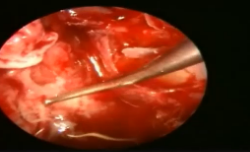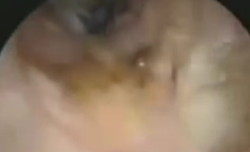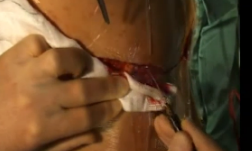Description:
Diagnosed with asthma in her 30s, Julia White teaches yoga to people with asthma to help them control their symptoms.
“I was diagnosed with asthma in my thirties in early 2003. I’d been feeling unwell and struggling to breathe for a while, and could no longer do simple things like meet friends for lunch without getting symptoms. But when my GP said it was asthma my heart sank. I lost my younger sister,Claire to an asthma attack in 1994 so I was terrified about what it meant for me.
“After a bad asthma attack left me with a cracked rib in the summer of 2003, I decided to completely re-evaluate my life and get my asthma under control. I quit my fast-paced job as a wedding and events planner and started a yoga training course. I’ve always been active and tried yoga in the past, so this was an opportunity to learn more about the exercise and how I could use it to improve my asthma.”
Discovering the benefits
“It took several months after my diagnosis to get my asthma under control and feel myself again. I started using a preventer inhaler and monitored my peak flowregularly to keep on top of my symptoms, but practising yoga was a huge help.
“At first I would start panicking if I felt my chest tightening and my breathing becoming more difficult, but yoga brought a stillness and calm into my life – helping me to get control of my breathing and manage my asthma better.
“It’s now been 10 years since my last asthma attack. My breathing is better and I feel so much healthier. While I sometimes get symptoms when the pollen count is high or when it’s cold, I’m now at a point where I can confidently manage my asthma and stay calm if I notice my breathing is becoming difficult. And I always keep my reliever inhaler with me in case of emergencies.
“I aim to practise yoga every day as I know just five minutes of yogic breathing and three or four postures will make me feel more energised and relaxed. All I need to do is find a quiet space, roll out my yoga mat and let the movements and deep breathing techniques work my mind and body.”
Medical and Patient education videos
-
Title
Description
-

Woodrow Maitland tells of his personal experience of having aspergillosis. Like most people he had never heard of aspergillosis when he was finally diagnosed and treated at the National Aspergillosis Centre, Manchester, UK
-

A series of nasal endoscopies – before during and after surgery. Surgical endoscopy by Raphaella Migliavacca. A patient 12 years old with AML undergoes remission following chemotherapy (2 rounds), admitted several months later with high fever and neutropenia. Patient undergoes regime of antifungal therapy including fluconazole, AmpB and voriconazole. (see full case as powerpoint slides presented In Brazil In FocusVII Aug 2009 Raphaella Migliavacca.). Nasal endoscopy was performed both pre-operatively and surgery removed a fungal ball. Biopsy revealed suppurative acute inflammatory findings (middle turbinate) and angioinvasive fungal structures consistent with aspergillosis. Cultures revealed Aspergillus flavus. Eight weeks later another endoscopy post surgery revealed marked improvement and reduced inflammation. The patient was given 12 weeks voriconazole followinf the surgery, followed by 3rd chemotherapy. The patient had recovered and was in complete remission 4 months after the surgical endoscopy.
-

Pre-operative endoscopy by Raphaella Migliavacca.
-

Produced by David Denning and described by Dr Rob Bissett. With kind permission of Gardiner-Caldwell, funded by Janssen-Cilag. Copyright Aspergillus Website.
-

This patient had a small hole in the bone at the base of the skull. He underwent endoscopy through the nose which shows the defect in the skull through which the brain is visible (pulsating). Kindly provided by Hesham Saleh, Consultant Rhinologist, Charing Cross and Royal Brompton Hospital .
-

The Aspergillus Website maintains a collection of clinical videos published on Youtube. Click on the listing at the top to access all videos.
-

Kindly provided by Hesham Saleh, Consultant Rhinologist, Charing Cross and Royal Brompton Hospital
-

Removing fungal growth from the maxillary sinus via the use of an endoscope.
-

This video shows the removal of the fungal ball through the left nasal passage
-

Produced by Dr Mark Jones and David Denning. Copyright Aspergillus Website.
